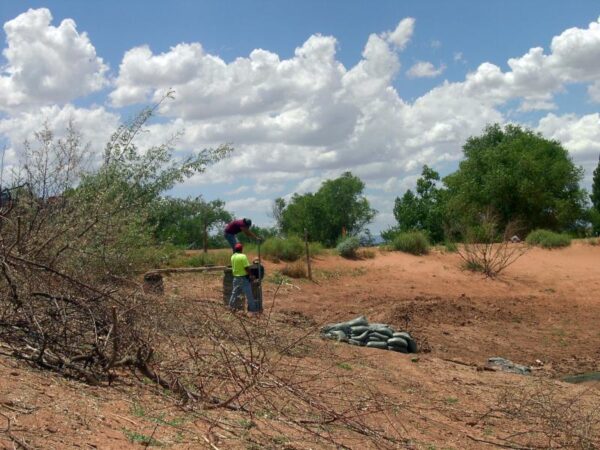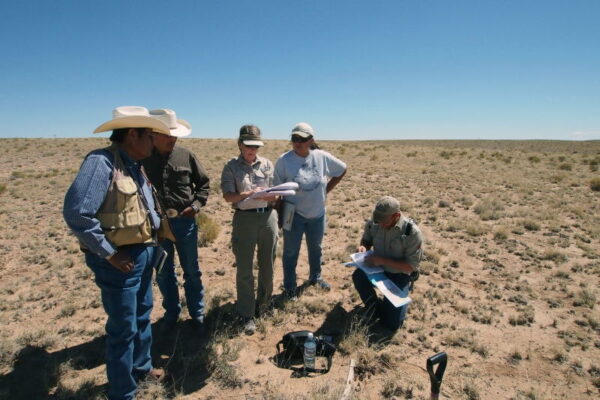Purpose and Need for the Programmatic Environmental Assessment (PEA)

Since the congressional repeal of the Bennett Freeze in 2009, the Navajo Nation believes that preserving the environment on its lands can be successfully balanced with the need for housing and infrastructure development, economic development projects, and other land use developments. A comprehensive Integrated Resource Management Plan (IRMP) is essential to the planning process and for balancing environmental protection and development on the Former Bennett Freeze Area (FBFA). Currently, the IRMP for the FBFA has not been finalized by the Navajo Nation or the Bureau of Indian Affairs (BIA).
Proposed Federal Action
The proposed federal action is the adoption of an IRMP for the FBFA as prepared by the BIA Navajo Region and Navajo Nation. The purpose of the IRMP is to meet the social, cultural, economic, and long-term sustainability needs of the residents of the FBFA. The IRMP is Tribe's strategic vision-based, long-range management plan based on Navajo Nation members’ interests, needs, and concerns for their lands, and natural and cultural resources.
The need for the action is the BIA’s responsibilities for the management of Indian agricultural lands under the American Indian Agricultural Resource Management Act, 25 U.S.C. Chapter 39 (AIARMA). The PEA will provide a framework for greater and more efficient agency coordination when tackling important management issues on the FBFA. This agency coordination will reduce duplication of effort by:
- Providing more consistent directives to agency staff;
- Requiring more transparency between agencies, tribal members, and the general public;
- Enhancing values-driven resource management decisions based on public input;
- Focusing management on priority issues; and
- Improving communication.
Programmatic Environmental Documents

Programmatic environmental documents are written to analyze impacts on a broad scale. This analysis does not evaluate the impacts from specific proposals in the FBFA. This PEA is not the final review upon which approval of all actions in the FBFA would be based. Site-specific environmental analyses and additional National Environmental Policy Act (NEPA) compliance would be required for all site-specific actions.
The PEA will:
- Provide the basis for selecting the appropriate integrated resource management strategy,
- Assess the potential programmatic impacts of the IRMP, and
- provide a document for tiering of site-specific NEPA documents.
The PEA is prepared following NEPA’s requirements, the Council on Environmental Quality implementing regulations, the Department of the Interior implementing regulations, and the Indian Affairs NEPA Guidebook (59 IAM 3-H). A PEA is a concise document that focuses on:
- Issues identified in scoping and the potentially significant effects of the proposed action
- Explains the environmental effects of the proposed action
- Identifies mitigation necessary to avoid significant impact
- Provides information to decision-makers
Public Environmental Assessment Process
The BIA and the Navajo Nation are seeking public involvement and input throughout the NEPA process. The 30-day public comment period for the draft Programmatic Environmental Assessment begins on May 24, 2021, and ends on June 23, 2021. The BIA is requesting that the public consider the IRMP and any environmental impacts it may have. There are several opportunities to participate in the public comment period. Four virtual public comment meetings will be held to present information to the public and obtain input. A schedule of meetings and instructions for how to participate is posted on the News & Events Page. Your comments are very important, particularly at this stage of the process—comments received during the public comment period will be reviewed and incorporated, as applicable, in the Final PEA.
When the Final PEA is issued, the Navajo Nation Resources and Development Committee, in consultation with the Navajo Hopi Land Commission, will select the preferred management alternative through Tribal resolution and recommend to the BIA Regional Director for approval and implementation of the IRMP. The BIA Regional Director will then issue a decision based on the Navajo Nation Resources and Development Committee recommendation, upon which the IRMP will be adopted. If the PEA concludes with a determination to proceed to prepare an environmental impact statement (EIS) rather than a finding of no significant impact, the BIA will proceed with the preparation of an EIS for the IRMP.


